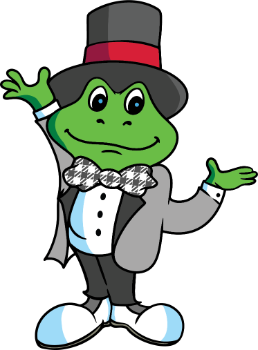UNIVERSITY PROGRAM COUNCIL

ELTON JOHN
Memorial Coliseum
November 14, 1972, September 28, 1974, and July 18, 1976
Affectionately known in UPC circles for a few years as the “annual Elton and Elvis shows,” these were big concert events. Elton John performed his first of three concerts during the 1970s in Tuscaloosa on November 14, 1972. The UPC had booked the show and scheduled it 10 days after Homecoming an appearance by comedian Bob Hope, also in Memorial Coliseum. But the English rocker was a much different animal. He was busy chewing up the pop landscape. His band was also at full tilt after the release of albums like “Madman Across the Water,” and “Honky Chateau,” John’s first number-one album, followed by “Don’t Shoot Me I’m Only the Piano Player.” Hits like “Levon,” “Tiny Dancer,” “Rocket Man” and “Honky Cat” all whooshed up the pop charts. It was around this time that John’s outrageous dress on stage began evolving, and his concerts became eye-popping fashion extravaganzas with costumes to rival anything Broadway or Hollywood had to offer. The UPC production was no exception; the more outrageous the look and behavior, the more the audience applauded. English progressive rock band Family opened the show playing songs from their recent album, “Bandstand,” which had dropped a couple of months earlier. Two years later on September 28, 1974, John was back on the road performing music from “Goodbye Yellow Brick Road,” an instant hit, a double album that spawned many hit songs. General admission tickets were $6.50 for the show, slightly higher than the typical $3.00 for students and $5.00 for everyone else. British blue-eyed soul singer Kiki Dee was the evening’s opening act. She’d previously sung back-up for Dusty Springfield, done some solo work in the U.K., and was on the tour based on the strength of her hit song, “I’ve Got the Music in Me.” It was released the previous July and became a huge pop radio hit. John’s concert began with the ominous “Funeral for a Friend,” from “Goodbye Yellow Brick Road,” met by thunderous applause as the band segued into the energized “Love Lies Bleeding.” It was a full-on frenzy. John sped through much of the album in manic fashion, stomping around the stage in boas and feathers and banging on his grand piano on rousing renditions of “Your Sister Can’t Twist (But She Can Rock and Roll)” and other numbers from “Goodbye Yellow Brick Road.” He played “Bennie and the Jets,” another number one smash, and other favorites like “Burn Down the Mission” from “Tumbleweed Connection,” and his recently released version of The Beatles’ classic, “Lucy in the Sky with Diamonds.” The audience was on its feet for much of the show and seemed to hang on John’s every word. When he sang the scandalous, “All the Young Girls Love Alice,” the crowd sang every lyric by heart, deftly hanging on the sibilance in “Alice.” An energized version of “Saturday Night’s Alright For Fighting” closed the show as the audience sang at the top of their lungs. The crowd cheered John with a five-minute standing ovation, which was followed by two more songs, “Crocodile Rock” and “The Bitch is Back.” By the time John returned to Tuscaloosa during the summer of 1976, he was the world’s biggest rock star. He’d appeared in a movie version of The Who’s rock opera “Tommy,” performing his version of “Pinball Wizard,” which zoomed to the top of the charts. His release “Philadelphia Freedom” was ubiquitous. John’s last two albums – the rock-orientated “Rock of the Westies” and the autobiographical “Captain Fantastic and the Brown Dirt Cowboy” -- were successes. For the July concert UPC staff dressed in shirts and shorts to approximate soccer uniforms [John was a huge English soccer fan]. This was a big rock show. John had retooled his band and added crackerjack English percussionist Ray Cooper (who was ill and appeared onstage in the form of a cardboard cutout), and a 25-year-old arranger named James Newton Howard, who played keyboards onstage. Later, Howard would expand his career scoring over 100 films and earning nine Oscar nominations. Beachballs and Frisbees flew around the Coliseum before the show as an impatient audience waited for the show to start. John was a tour de force, chucking several piano benches off the side of the stage in a musical rage, and awkwardly climbing on top of his Steinway grand piano while belting out hard rocking songs like “Grow Some Funk of Your Own” and “Island Girl.” His songwriter partner Bernie Taupin roamed the area around the front of the stage snapping photos throughout the show.

